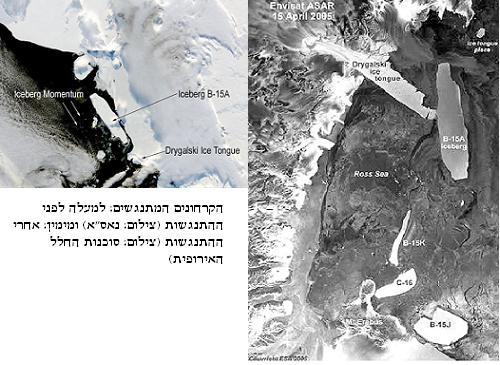A floating glacier 115 km long collided with an ice tongue about 70 km long, breaking off part of it. The collision will force geographers to update maps of the area

A floating iceberg the size of Luxembourg, collided in recent days with a huge ice tongue protruding from the Antarctic continent, and crushed a strip five kilometers long. The floating iceberg, known as B-15A and which is 115 kilometers long, has been observed since January as it moves on a collision course with the Drygalsky Ice Tongue, which is about 70 kilometers long. The glacier itself has not been damaged so far as a result of the collision.
Experts claim that in the coming days, additional damage will be caused to the ice tongue, as additional parts of the B-15A glacier are still expected to collide with it. The BBC reported that the latest developments may force geographers to update the maps of the region.
The area of B-15A is about 2,500 square kilometers, and it is the largest remnant of the B-15 glacier, which was even larger, and broke off from the Ross Ice Shelf in March 2000. The initial area of B-15, like the area of Jamaica, was first 11,655 square kilometers, but later it broke up into several parts.
After breaking away from Glacier B-15, Glacier B-15A drifted independently, blocking currents in the ocean and causing sea ice to form. Due to these processes, the penguins are forced to swim a greater distance to reach open water and food, and experts fear that many young penguins will starve to death.
